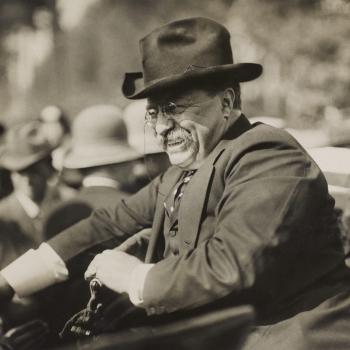Ronald Wells, a historian at Calvin College for many years, once complained that he wanted to leave evangelical Protestantism but had no address to which to send his membership card. Ron forgot to add that he did not even have a membership card to turn in. If you had one, do you send it to Wheaton College? The National Association of Evangelicals? The Billy Graham Evangelistic Association?
Could the remedy be that evangelicalism is not a set of institutions or a structure, but an gospel eco-system? About seven years ago the evangelical Presbyterian pastor proposed such an organism for church growth:
What’s the core? At the core is A, this: an effective, contextualized way of communicating and embodying the gospel for center city residents. If you have an effective, if you have a contextualized, effective, contextualized way of communicating the gospel and embodying the gospel for center city residents, you’re actually going to win large numbers of them, its just going to happen. If you get that right, its gonna happen. And if you don’t get that right, then you, really just kind of re-circulate the saints around. So first of all, you got to have to have that core. Now we’ll get back to that, because obviously, you say, “ whoa, whoa, what’s that?”
But B, around that core, there have to be at least, or I’m going to say, a whole series of church planting movements. At least 5 or 6, I would say—depends on the size of the city—of different denominations and traditions, that are using the core, you know the contextualized ministry model, they are using the core but are using it within their tradition. You know, whether its Anglican, Episcopal, whether its Methodist, Presbyterian, Baptist, Pentecostal, so on. They’re using the core inside their tradition, and there’s at least 5 or 6, and they’re Church Planting Movements. What’s a Church Planting Movement? A Church Planting Movement: if a half to 2/3rds of all the churches in a group are planting a daughter church within 5 or 6 years, and then when those daughter churches, if, you know, half or 2/3rds of them plant a daughter church within 5 or 6 years, that’s a moment, its just, its growing. And, if those networks have some common vision of love, you know for reaching the city, and a certain generosity toward each other, you’ve got the second layer of the gospel movement. It can’t just be one network, it can’t just be Presbyterians or Baptists or whatever. There’s got to be, that core has to be embodied in a number of different traditions, and those traditions have got to be all, a good number of them, doing church planting. So that they’re, just expanding, expanding. That’s the second.
Notice that denominational structures or churchly institutions won’t cut it. It’s a core of contextualized communication that possesses a “common vision of love.” It does sound intentional. So to belong to this eco-system you need to be aware. It simply cannot capture you unknowingly.
Roger Olson a couple years ago proposed something equally squishy — an ethos:
These are Bebbington’s and Noll’s four hallmarks, distinguishing features, of what I am calling the authentic evangelical ethos. In other words, “evangelical” is not merely “Protestant;” it is Protestantism energized with transforming personal experience of God. It is Protestantism on fire.
To these four hallmarks I add a fifth—respect for the Great Tradition of Christian orthodoxy especially as interpreted by the Reformation broadly defined (for example, to include the Anabaptists). Evangelicals always have been orthodox Protestant Christians in the sense of having a high Christology, embracing a trinitarian view of God, and believing in original sin and salvation through Christ alone, by grace alone, through faith alone. Evangelicals agree, however, that “saving faith” can never be merely notional; it always bears the fruit of Christ-centered discipleship, obedience and good works made possible by the indwelling, transforming Holy Spirit.
This ethos, marked by these five common features, “family resemblances,” is alive and well. Unfortunately, those who share it tend to emphasize and underscore their differences about details such as the exact nature of biblical accuracy, whether it should be regarded as strict inerrancy or infallibility in matters of faith and practice. Other differences that divide those of us who share this ethos were mentioned earlier. There is no need to dwell on them here. Suffice it to say that it now seems unlikely, perhaps impossible, that these differences will allow reunion of evangelicals into a cohesive movement. These five hallmarks of the evangelical ethos constitute my particular brand of evangelicalism; whole heartedly embracing them I still consider myself “evangelical” in spite of everything—including the demise of the evangelical movement and the mistaken popular association of “evangelical” with conservative politics and reactionary social activism.
Anyone familiar with Coen Brothers’ movies has to be thinking of Walter Sobchak’s line in the Big Lebowski about National Socialism (those offended by vulgar language do not watch the whole clip):
I am unconvinced by either Keller’s organic model or Olson’s ethos. Protestants are converting to Rome because evangelicals won’t pony up with structures and norms and forms and boundaries. But as long as evangelicals continue to gather around shared feelings, they will perpetuate the legacy of pietism, a form of Protestantism that broke with the Reformation’s attention to forms. Why, after all, do you think they called it ReFORMation?












